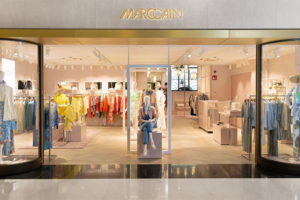By Carsten Kreutze
Politicians have long acknowledged the fact that real estate can make a significant contribution to climate protection, and legislative regulation is being further strengthened. In the EU, buildings are responsible for 40% of energy consumption and 36% of CO2 emissions.* Climate awareness has also risen significantly among the population, due in no small part to the particular effectiveness of young people in drawing attention to the issue in 2019. Many companies are also showing great commitment and putting far-reaching sustainability measures high on their agendas, for example, major shopping center operators, such as Klépierre** and Unibail-Rodamco-Westfield***, intend to reduce their total CO2 emissions by 50% by 2030.
Real estate operators are now faced with the challenge of finding and combining initiatives in order to achieve such ambitious goals. In addition, it is not always easy to modernize technical equipment or carry out refurbishment measures, as such measures are associated with high costs and often the interruption of operations.
The progressive networking within the real estate sector provides completely new opportunities for building management and new ways to reduce CO2 emissions. The increase in equipment fitted with sensors and control technology has produced a growth in data volume. However, the knowledge contained in the data is usually neither gathered nor used. Such volumes of data in the field of air conditioning technology make the use of artificial intelligence possible, because that is the area in which special savings potential lies dormant: The technical staff has little time to provide constant support for the systems, so they are often adjusted once and then continuously operated; as a result, the actual needs are not met. Air conditioning systems cannot take into account developments that may occur during the course of any given day.
Artificial intelligence (AI) is used to achieve something that was not possible before, namely, the implementation of energy efficiency in a cost-effective manner, resulting in rapid savings. Building and system behavior is automatically learned and provided with forecasts. After all, weather, customer footfall, opening hours, etc. have a strong impact on individual energy requirements. The data obtained from a building serves as the basis. Now, each area of a building is automatically supplied with as much energy as is actually needed. AI puts the various influences into balance, while simultaneously optimizing the indoor climate. For example: Breuninger, a fashion company, faced a particular problem at its store in Freiburg, where some levels were regularly too hot in summer. Following optimization using AI, the desired target temperature values were permanently achieved. In total, 235 tons of CO2 emissions were eliminated within 24 months, and thermal energy consumption was reduced by 25%.
Consequently, the concept of Green Buildings is no longer reserved for new buildings, but can also be implemented on a broad scale, particularly with regard to existing buildings. State-of-the-art, digital innovations assist in the achievement of ambitious CO2 emissions targets – for a green and sustainable retail world.
Sources:
*EU Commission: https://ec.europa.eu/info/news/new-rules-greener-and-smarter-buildings-will-increase-quality-life-all-europeans-2019-apr-15_en
**Klépierre: http://www.klepierre.com/en/csr/
***Unibail-Rodamco-Westfield: https://www.urw.com/en/csr






![Titel_Across_1_24_Endversion[111270] Titel_Across_1_24_Endversion[111270]](https://www.across-magazine.com/wp-content/uploads/elementor/thumbs/Titel_Across_1_24_Endversion111270-qjpg2yp7x6msxzo90wpo62uop32tmjtjils84ezryg.jpg)
